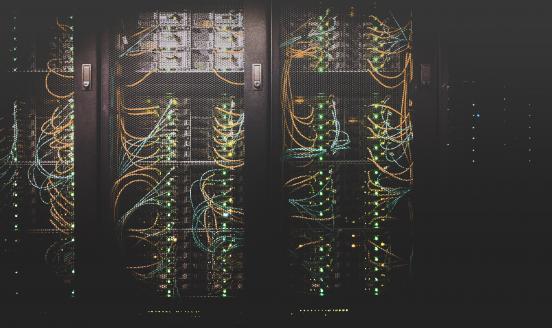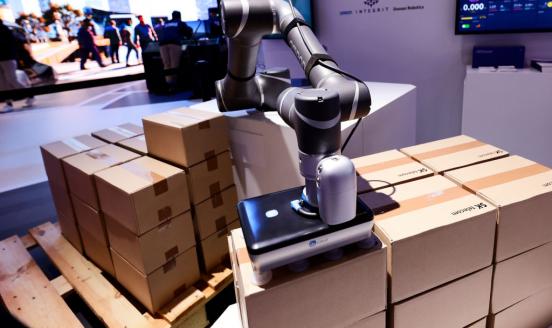Web3: the next internet revolution
Tokenisation based on blockchain technology could bring radical changes to markets for goods and services.

Web3 is a new paradigm that could define a new internet era. It is based on blockchain, a technology through which a network of computers – called nodes – can execute and validate changes to a public ledger. Blockchains can be used to record ownership of goods and claims to services, and because this information is public, ownership can be verified by anyone. This could mark a shift that will disrupt current digital business models by offering firms and consumers new types of opportunities. To get the most out of this upcoming digital revolution, however, new rules, legal guidelines, marketing strategies and user awareness need to be established.
Web3 will follow on from the Web1 (1994-2004) and Web 2 (2004 to now) eras. Web1 was, for most of its users, ‘read-only’. Traditional businesses, such as newspapers and retail, went online. Online search tools and marketplaces were developed, allowing users to access information and to purchase online books and other physical goods. New firms active in these domains emerged, with Google, Amazon and other frontrunners becoming among the most valuable companies in the world.
Web2 is ‘read-write’. Users can create their own content and supply their own services for other users. Apps that have emerged during this era include social media platforms such as TikTok, YouTube and Twitter, and online service platforms such as Uber and Airbnb. Web2 has expanded the possibilities for online users to supply their under-utilised assets and receive payment in return. Web2 has also disrupted traditional business models by providing opportunities for service providers to reach potential demand via the newly-established platform channels, instead of passing through traditional supply channels.
Web3 is ‘read-write-own’, a term coined in 2014. It refers to new types of applications that will usurp current apps or work alongside them. Web3 began as part of a cypherpunk movement in which users are self-sovereign and do not rely on intermediaries such as banks, governments or platforms. With Web3, businesses can build products on top of open, decentralised protocols, just as they have on the original internet protocols of, for example, hyperlinks and email.
The difference, however, is that in Web3, user can now own tokens: abstract units that can represent any digital asset. Tokens can be viewed as a bearer instrument, the ownership of which is verified by holding the asset as a token in a blockchain address or digital wallet. Through token ownership, user can in principle collect, trade, verify, gift, lend or pay for any asset. This makes it vital to know how blockchain technology could and cannot help businesses to innovate.
Buzzwords in Web3, such as cryptocurrency and non-fungible tokens (NFTs), tend to obscure the potential of blockchains and the impending “tokenisation of everything”. However, the reputation of Web3 is often tainted by hacks, scams and fraud. Users are inexperienced and regulatory enforcement is lacking. Cryptocurrency, notwithstanding its high profile, is only one type of asset, namely currencies. NFTs are a means to tokenize non-fungible assets such as digital art or music, whereas regular tokens (or ‘coins’) are more fungible.
In the initial stages of the transition to Web3, businesses will tokenise many existing goods and services. But at later stages, the real revolution will come, with entirely new businesses enabled by the technology. Web1 exhibited the same pattern of existing services, such as mail, radio and telephone directories, put online as electronic mail (as Bill Gates explained to David Letterman in a humorous 1990s interview).
What will the Web3 future look like?
More decentralised structures and markets will emerge. Instead of users accessing online services through centralised platforms like Facebook, Google and Amazon, they will be able to own and govern sections of the internet themselves. They will not have to rely on centralised platforms for access to these services. Online interactions will be facilitated by tokens. With tokens, owners can freely transfer, lend, resell or gift their tokenised digital assets. This opens doors for fundamentally new user behaviours and business opportunities through decentralised market structures.
For example, Web3 social media will not have to rely on a central platform authority that defines the governance rules of its ecosystem and matches supply (eg advertisers) with consumers (eg individuals who consume social media services). Decentralisation of social media exchanges will become possible because blockchains are hosted by a network of nodes– computers running an app that communicates and coordinates with other nodes in the network. These are not centralised platforms (though they vary in how decentralised they are). Decentralised apps (dapps) are run on smart contracts, which carry out transactions or facilitate interactions by executing smart contracts run on the nodes in a blockchain network.
Smart contracts can replace centralised platforms. All nodes of the network can simply run dapps based on the smart contract and interact with each other. Individuals will be able to interact through the ownership and transfer of tokens to others on their social networks. A user’s posts, likes and comments can be stored on the blockchain, and fans can, for example, tip their favourite creators by sending tokens from their digital wallets.
People will be able to connect to the network in Web3 by simply reading and writing (eg exchanging tokens) to a smart contract. All data is public, so anyone can see anyone else’s post, unless there are explicit privacy features. Posts will be viewed via traditional websites and apps that interact with the blockchain.
A similar decentralised structure will be followed by other online activities. Online trade will no longer require centralised marketplaces that govern and enable online transactions. In fact, there are already cases of online trades of tokens via dapps. In Web3, this mechanism can be expected to expand and become more mainstream. People and businesses will trade with tokens in their digital wallets, a decentralised and more direct way to transfer ownership of digital (or physical) assets.
Content providers will issue tokens that confer ownership rights to their content and will distribute them to consumers. Unlike the current subscription-based business model, consumers will be able to resell their tokens on attached secondary markets. On the secondary market, creators of the goods can be compensated through royalties, and new business models will be created in which the community can earn royalties through secondary sales.
It is worth noting that while digital goods can certainly be programmed to be perishable (eg a game item might expire after one season of play), the token itself is durable indefinitely as long as the underlying blockchain network remains operational. So, it can be interpreted as an ownership asset.
Eventually, digital assets as mundane as documents (eg pay slips or tickets) will be tokenised. Getting a driver’s license might become as simple as verifying on-chain documents proving, for example, residency with one cryptographic signature. Of course, this requires additional privacy features that allow verification while concealing the contents of the asset. Infrastructure currently in development would ensure privacy of information that is openly verifiable on-chain. As a privacy layer of blockchains matures, many other government services, such as those that issue licenses or other documents, may benefit from using on-chain documents and verification.
All these examples illustrate that in principle almost everything can be tokenised, making Web3 potentially the most radical technological disruption of all the three internet eras. The Web3 future is not very distant. Many goods have already been or are starting to be tokenised. Examples include tokenised art, profile pictures, music, blogs, governance tokens, gaming items, real estate and even intellectual property rights (IP).
For example, Times Magazine sold NFTs called TIMEPieces to form a community with its supporters. Games are tokenising their items, such as playable characters or virtual wearables, and even pieces of writing are tokenised. Starbucks is testing its loyalty points, which reward customers for repeat purchases, on the Polygon blockchain. On-chain loyalty points are durable, tradable and programmable, so users can use points to craft custom, limited-edition rewards badges.
Important steps to support Web3-related innovation
Infrastructure and the user experience must develop to make Web3 applications possible. On-chain assets are sovereign, in the sense that only owners have ultimate control over their assets. Only the user who holds the private key (ie the password) of their blockchain wallet can control the tokens held in the wallet. However, such self-custody requires users to be responsible for their tokens. If a user loses the private key, then no one – no company and not even the government – can recover the tokens. Thus, to achieve mainstream adoption of Web3 applications, firms will be needed to take custody of assets for users in custodial wallets, while allowing users to send tokens to their own self-custodied wallets.
Even more demanding will be the legal guidelines for digital assets. Web3 will require a new legal/regulatory infrastructure to ensure that tokens are not stolen or abused. A major question is whether tokens should be viewed as securities or commodities. Because tokens are programmable and tradable, digital assets can have characteristics of securities or commodities. For example, does a token that distributes rewards from protocol fees constitute a security? The United States Securities Exchange Commission seems to think so. On the other hand, the US Commodities Futures Trading Commission and many legislators argue that most tokens are commodities (see the US Digital Commodities Consumer Protection Act, the Responsible Financial Innovation Act and the Digital Commodity Exchange Act). Businesses need legal guidance on tokenising digital assets, and consumers also need protection against fraud, especially for security-like tokens.
Other areas where regulatory guidance might be needed include stablecoins (ie tokens pegged to a fiat currency), centralised exchanges and financial services, and decentralised autonomous organisations. In 2022, stablecoin transactions amounted to more than $7 trillion, but regulation of stablecoins is just beginning. While it is relatively easier to regulate stablecoins that are backed by an equal value in fiat currency, it seems more difficult, but important nonetheless, to regulate algorithmic stablecoins, which seek to maintain their value equivalent to fiat currencies through game theory and algorithms.
Consumers must be protected through regulation where necessary, but it is equally important to prevent the stifling of innovation that could benefit consumers in revolutionary ways. Both goals can be reached by carefully adapting existing regulation and regulatory agencies to the use and applications of blockchain technologies in the Web3 era. Policymakers must ensure that businesses have proper guidance for tokenising digital assets, and that consumers are protected against fraud or other unintended consequences of digital ownership. Everyone has a role to play to ensure that blockchain technology improves social welfare for businesses and consumers.



